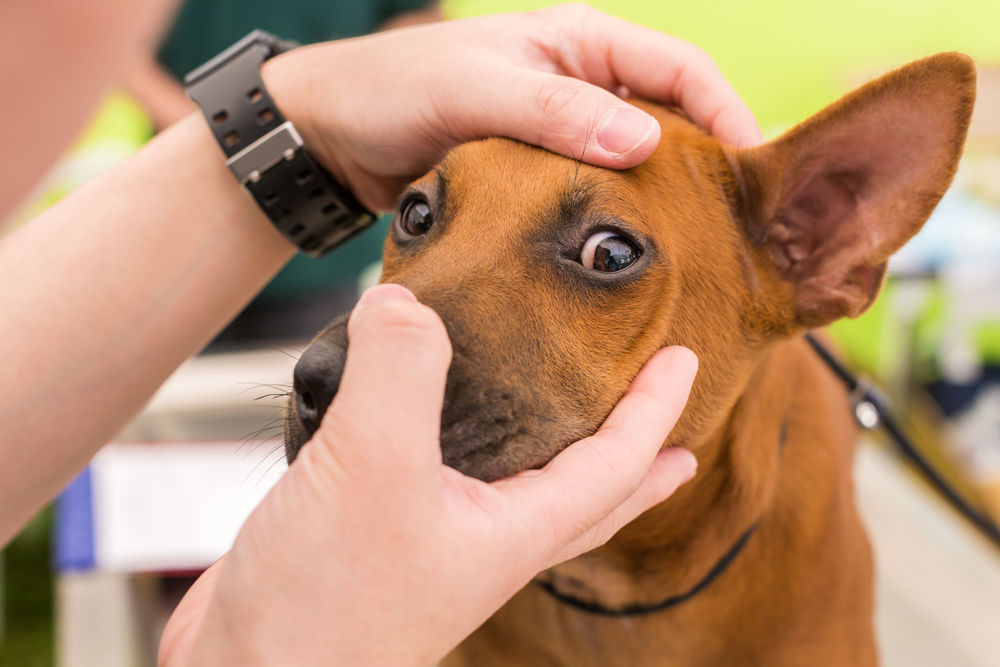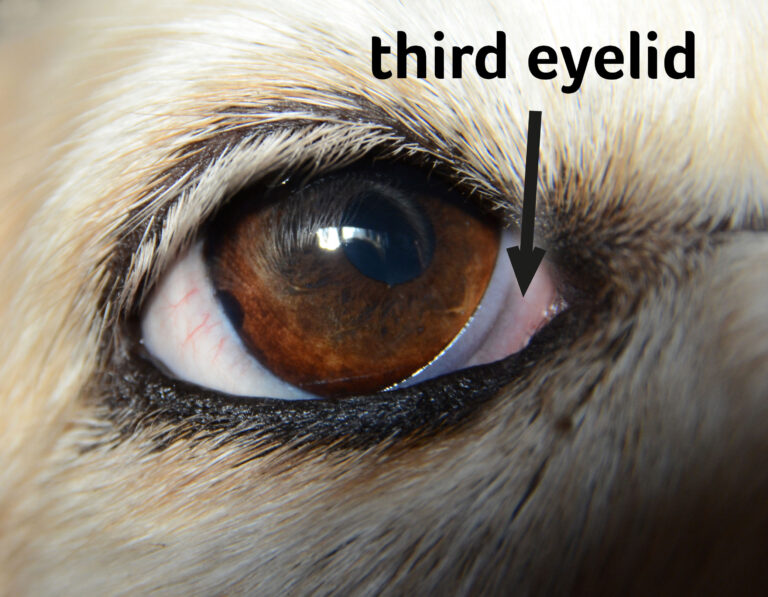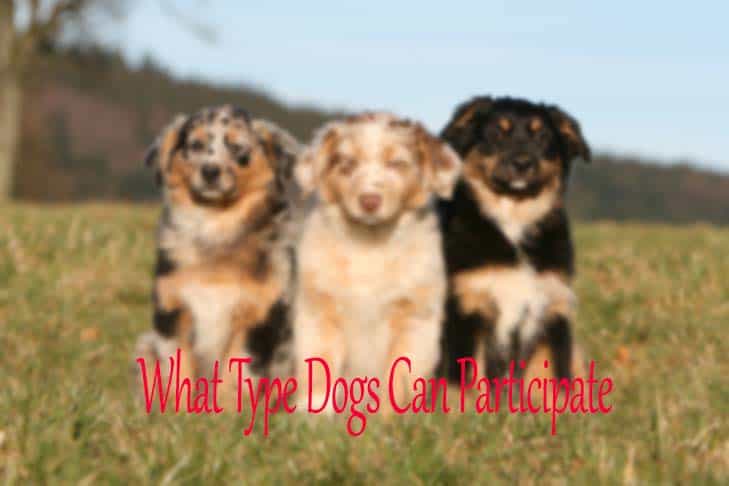Have you ever noticed your dog’s third eyelid showing and wondered what it means? This mysterious aspect of a dog’s anatomy can often cause confusion and concern among pet owners. In this blog, we will delve into the intricacies of why a dog’s third eyelid may become visible and what potential implications it could have on your furry friend’s health. Understanding the function of the third eyelid, also known as the nictitating membrane, is crucial in deciphering your dog’s ocular health. Join us as we unravel the secrets behind why your dog’s third eyelid may be showing and what steps you can take to ensure your pet’s well-being.
Understanding a Dog’s Third Eyelid
When a dog’s third eyelid shows, it can be a cause for concern for pet owners. Known as the nictitating membrane, this translucent or white inner eyelid becomes visible when there are underlying health issues affecting your furry friend.
What Does It Indicate?
The emergence of the dog’s third eyelid showing, especially when it persists, may signal ocular abnormalities, infections, injuries, or systemic diseases. It’s essential to consult a veterinarian promptly to evaluate the underlying cause.
Common Causes
Common reasons for the third eyelid showing in dogs include uveitis, conjunctivitis, ocular trauma, or inflammation. These conditions warrant immediate medical attention to prevent further complications.
- Uveitis: Inflammation of the uvea that can lead to eye discomfort and vision problems.
- Conjunctivitis: A common eye infection causing redness, discharge, and irritation.
- Ocular Trauma: Injuries to the eye region can result in the third eyelid becoming visible.
- Inflammation: General eye inflammation can lead to the nictitating membrane showing.

Causes of a Dog’s Third Eyelid Showing
When a dog’s third eyelid is showing, it can be an indication of an underlying issue that needs attention. This condition is medically known as the nictitating membrane or haw. Several reasons can cause a dog’s third eyelid to become visible, including:
1. Eye Infections or Inflammation
Dogs may exhibit a prominent third eyelid in response to eye infections caused by bacteria, viruses, or foreign bodies. Immediate veterinary attention is crucial in such cases to prevent further complications.
2. Corneal Ulcers
Corneal ulcers can lead to the protrusion of the third eyelid due to the pain and discomfort associated with this condition. Early diagnosis and proper treatment are essential for the dog’s eye health.
3. Lack of Proper Nutrition
Dietary deficiencies, especially in essential nutrients like vitamin A, can contribute to the visibility of the third eyelid in dogs. Ensuring a well-balanced diet is crucial for overall eye health.

Common Breeds Prone to Third Eyelid Exposure
When it comes to dogs, certain breeds are more susceptible to exhibiting their third eyelid, which can be a cause of concern for many pet owners. Breeds such as Basset Hounds, Bloodhounds, and Great Danes are known to be more prone to this condition, commonly known as “cherry eye.”
Common Breeds Affected
These breeds have a genetic predisposition that can lead to third eyelid exposure. The Labrador Retriever is also another breed that may experience this issue due to their anatomy and genetic makeup.
Potential Causes
Factors such as genetics, stress, and eye infections can contribute to the visibility of the third eyelid in these breeds. It is essential for pet owners to monitor their dogs closely and seek veterinary attention if the third eyelid is consistently showing.

Symptoms to Watch Out For
When it comes to your dog third eyelid showing, there are certain symptoms you should be aware of to ensure your furry friend’s eye health is in check. One prominent sign to watch out for is the visible appearance of the third eyelid, which can indicate potential issues.
Redness or Irritation
If you notice redness or irritation around your dog’s eye with the third eyelid showing, it could be a sign of underlying problems. Consult your veterinarian to address the concern promptly.
Excessive Tearing
Another symptom to be mindful of is excessive tearing accompanied by the third eyelid being visible. This may indicate tear duct issues or infections that require attention.
Treatment Options for a Dog’s Third Eyelid Showing
When a dog’s third eyelid is showing, it could be an indication of an underlying health issue that needs treatment. The treatment options for this condition vary depending on the cause and severity of the problem.
Consultation with a Veterinarian
To address the issue effectively, it is crucial to consult with a veterinarian. A thorough examination will help determine the root cause of the third eyelid showing.
Seek professional advice if your dog’s third eyelid is persistently showing and accompanied by other concerning symptoms such as redness or swelling.
Medication and Eye Drops
Your veterinarian may prescribe medication or eye drops to treat infections or inflammation that could be causing the third eyelid to protrude.
- Follow the prescribed dosage and administration schedule diligently.
- Monitor your dog’s response to the medication and report any changes or concerns to your vet.
Preventive Measures and Care Tips
When you notice your dog’s third eyelid showing, it can be a sign of various underlying health issues. To prevent and address this concern, consider the following preventive measures and care tips:
Regular Eye Exams
Schedule regular check-ups with your veterinarian to monitor your dog’s eye health. Early detection of any abnormalities can help in timely intervention.
Proper Nutrition
Ensure your dog’s diet is balanced and contains essential nutrients like vitamin A, which is crucial for eye health. Consult your vet for suitable dietary recommendations.
Eye Hygiene
Regularly clean your dog’s eyes with a vet-recommended solution to prevent infections and irritations. Use a clean, soft cloth or cotton ball for gentle cleansing.
Avoid Irritants
Avoid exposing your dog to potential eye irritants like dust, smoke, or chemicals that can trigger eye discomfort and lead to the third eyelid showing.
Frequently Asked Questions
- What is a dog’s third eyelid?
- The third eyelid, also known as nictitating membrane or haw, is a transparent or translucent third eyelid located in the inner corner of a dog’s eye.
- Why does a dog’s third eyelid show or become visible?
- A dog’s third eyelid may show or become visible for various reasons including illness, injury, irritation, or pain. It serves as a protective mechanism to help keep the eye moist and shield it from harm.
- Is it normal for a dog’s third eyelid to be visible at times?
- Yes, it is normal for a dog’s third eyelid to be visible at times, especially when they are sleepy or resting. However, if it is constantly showing or there are other symptoms present, it might indicate an underlying health issue that requires attention.
- When should I be concerned about my dog’s third eyelid showing?
- If you notice that your dog’s third eyelid is constantly showing or if there are accompanying symptoms such as redness, discharge, squinting, or pawing at the eye, it is best to consult a veterinarian for a proper assessment and treatment.
- Can a dog’s third eyelid showing be a sign of an eye infection?
- Yes, a dog’s third eyelid showing can be a sign of an eye infection, injury, or other eye-related issues. It is important to have it evaluated by a vet to determine the underlying cause and provide appropriate care.
Closing Thoughts
Understanding why a dog’s third eyelid is showing can be a crucial indicator of their overall health. Whether it’s due to illness, injury, or simply fatigue, being observant of this small detail can help you better care for your furry companion. Remember, a third eyelid showing could be a sign that something is amiss, prompting you to seek veterinary help promptly.
By educating yourself about this mysterious but important aspect of your dog’s anatomy, you are empowered to provide them with the best possible care. Keep an eye on your dog’s eyes, and you’ll be better equipped to ensure their well-being and happiness.



